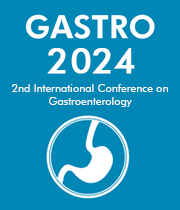Title : A rare case of acute liver failure caused by scrub typhus and co Infected with Mucormycosis
Abstract:
35 year old male presented with high grade fever with chills for 15 days, yellowish discoloration of eyes and urine, decreased urine output for 7 days and altered mental status for 3 days. On presentation, noted to have elevated temperature (101.9F), tachycardia (HR), tachypnea (RR) with BP 106/74 mm Hg.GCS score 12/15. Physical examination revealed scleral icterus, pallor, bilateral crepitations and flaps. Initial laboratory testing was suggestive of acute febrile illness with hepatic and renal injury (blood urea -275 mg/dl , serum creatinine -7.3 mg/dl,total bilirubin/direct bilirubin -20/11mg/dl , SGOT/SGPT- 1024/979IU/L), Ammonia -113 mg/dl .Calculated R factor 59.9 suggestive of hepatocellular injury. Tropical illness panel (including malaria, dengue, scrub typhus, widal, hepatitis, leptospirosis, hepatitis) was sent for analysis and returned positive for scrub typhus (ELISA). Chest X ray revealed bilateral lower zone infiltrations. Patient was started on injectable doxycycline 100 mg IV BID and anti HE measures in addition to multiple hemodialysis sessions given anuria. Though both clinical and on laboratory parameters improvied, on day 10 of hospitalization, patient developed difficulty in opening his left eye and pain in left cheek. On examination, there was left eye ptosis and ophthalmoplegia. MRI brain with venogram and NCCT PNS were suggestive of fungal sinusitis. To further confirm our diagnosis and identify the fungus involved, diagnostic nasal endoscopy and biopsy were performed which confirmed aseptate fungal hyphae positive for KOH mount. HbA1c, HIV, fasting blood sugar, detailed peripheral blood smear examination were performed to rule out established risk factors of the disease ; since the patient was not treated with steroids or other immunosuppressive drugs and did not have any history of trauma. Renal failure, ICU stay and oxygen supplementation might have been probable risk factors for mucormycosis. Patient was started on tablet posaconazole considering the diagnosis of mucormycosis and discharged day 21 with normalized renal function tests.
Our case is unique because scrub typhus is a rare cause of acute liver failure and mucormycosis per se is a rare entity, specially in the absence of trauma and in non diabetic population. Concomitant presence of rhino orbital cerebral mucormycosis in an immunocompetent patient with scrub typhus is relatively rare. Another leaning point is that there is a broad differential for acute liver failure but tropical illness should be kept in mind. It can be seen more often with travel history and timely diagnosis can be lifesaving. In our case, promptness in looking for signs of mucormycosis in our ICU patient lead to more emergent treatment and improved overall clinical outcome.



